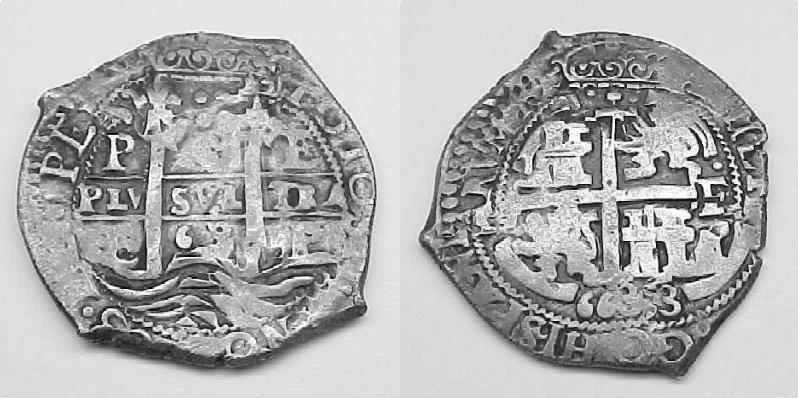The ‘Spanish’ or ‘Spanish American’ peso or ‘Piece of Eight’ was the first global currency. Its impact was long lasting and far reaching. Successively known in Spanish first as “real” or “peso fuerte”; in English as piece of eight, cob or pillar; in French as piastre; and after 1730 in Spanish as peso columnario or moneda columnaria and milled dollar in English, this specie was also well known in Asia. These coins changed people’s consumption habits around the world by providing access to a wealth of imported goods. Pieces of Eight bought luxury items including spices, silk and cotton textiles, porcelain and tea, all of which became staple commodities as global commerce expanded. Until the late 18th century the silver dollars or pesos were minted in three cities only: Mexico, Lima and Potosí. The process involved cutting the silver with pliers into discs or planchets of a specified weight and purity, set at a weight of 423.9 grains, or 27.47 grams inclusive of alloy, and 930.7 thousandths of fin silver quality. The coins were decorated with symbols of the Hispanic and Indian sovereigns. The legend Hispaniarum et Indiarum Rex evoked the plus ultra reach of the Hispanic Monarchy and distinguished the cob from coins minted in peninsular Spain that made no reference to the Indies. Mexico alone cut 761 million of these coins.
Plus Ultra Piece of Eight from Potosi Mint
Piece of Eight with Plus Ultra pillars, Potosí mint, 1663 (courtesy of the Trustees of the British Museum).
Alejandra Irigoin and Bridget Millmore
Further reading
- Flynn, D. (1996) World Silver and Monetary History in the 16th and 17th Centuries (Aldershot: Variorum).
- Irigoin, A. (2018) ‘The rise and demise of the global silver standard’, Handbook of the History of Money and Currency (Singapore: Springer).
- Lin, M.H. (2006) China Upside Down: Currency, Society, and Ideologies, 1808–1856 (Cambridge, MA: Harvard University Asia Center).
- TePaske, J., and K. Brown (2010) A New World of Gold and Silver (Leiden: Brill).
- Von Glahn, R. (1996) Fountain of Fortune: Money and Monetary Policy in China, 1000–1700 (Berkeley, CA: University of California Press).





